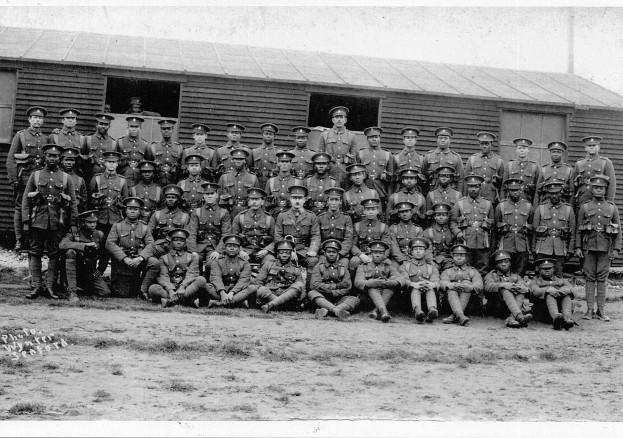
WALTER TULL has become the most celebrated black British soldier of the First World War. He enlisted in December 1914, suffered shell shock, returned to action in the battle of the Somme and was decorated with the 1914-15 star and other British war and victory medals.
Commissioned as an officer in 1917, Tull was mentioned in dispatches for his ‘gallantry and coolness’ at the battle of Piave in Italy in January 1918, but two months later he was killed in No Man’s Land during the second battle of the Somme.
With the centenary of the First World War from 2014 to 2018, there are many others who have been overlooked in the history books and need to be acknowledged.

After Britain joined the First World War on 4 August 1914, Black recruits could be found in all branches of the armed forces. From 1914 Black Britons volunteered at recruitment centres and were joined by West Indian colonials.
MOTHER COUNTRY
They travelled to the ‘Mother Country’ from the Caribbean at their own expense to take part in the fight against the Germans. Their support was needed, and they gave it.
Soon after the war started, soldiers from Nigeria, the Gold Coast, Sierra Leone, Gambia and other African colonies were recruited. They helped to defend the borders of their countries which adjoined German territories and later played an important role in the campaigns to remove the Germans from Africa. Throughout the war, 60,000 Black South African and 120,000 other Africans also served in uniformed Labour Units.
No one could have been more loyal to his king and country than the Guyanese merchant seaman Lionel Turpin. He was just 19 years old when he enlisted in the British Army and was sent out with the No. 32 British Expeditionary Force to the Western Front in Europe.
He was in the battles of the Somme and his army service ended in 1919 with two medals, two gas-burnt lungs and a shell wound in his back.
Lionel died in 1929 from the after-effects of war-time gassing. Lionel’s story is typical of many Black colonials who came to the aid of the ‘Mother Country’ during the First World War.
In 1915 a proposal for a separate West Indian contingent to aid the war effort was approved. Consequently the British West Indies Regiment (BWIR) was formed as a separate Black unit within the British Army. The first recruits sailed from Jamaica to
Britain and arrived in October 1915 to train at a camp near Seaford on the Sussex coast.
The 3rd battalion arrived in early 1916 in Plymouth while other battalions sailed direct to Egypt, arriving in Alexandria in March 1916.

SACRIFICE
By the war’s end in November 1918, a total of 15,204 black men, had served in the BWIR.
However, the Black soldiers of the BWIR were mostly led by white officers and used as non-combatant soldiers in Egypt, Mesopotamia and parts of Europe. For example, in July 1916 the BWIR’s 3rd and 4th battalions were sent to France and Belgium to work as ammunition carriers.
The BWIR spent much of their time at labouring work, such as loading ammunition, laying telephone wires and digging trenches, but they were not permitted to fight as a battalion.
By the end of the war the BWIR had lost 185 soldiers (killed or died of wounds).
A further 1,071 died of illness and 697 were wounded.
In Seaford Cemetery there are more than 300 Commonwealth War Graves and
nineteen of the headstones display the crest of the BWIR.
Some of the Black servicemen made the ultimate sacrifice but, with the passage of time, with the exception of Walter Tull, the contributions of black servicemen have been forgotten. It is hoped that the centenary of the First World War will change that.
Stephen Bourne’s Black Poppies – Britain’s Black Community and the Great War is published by The History Press in August 2014.
